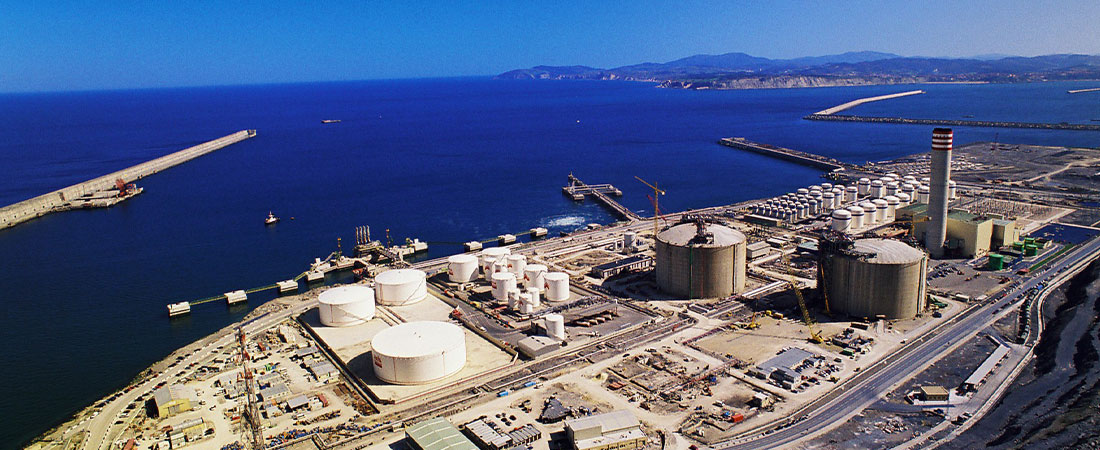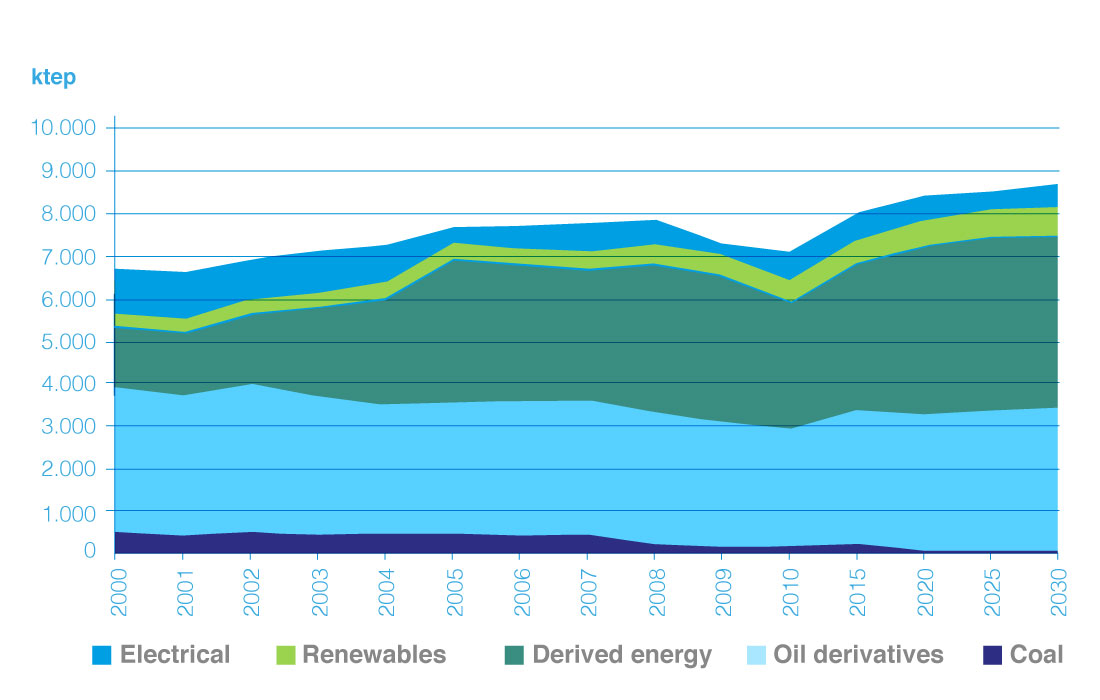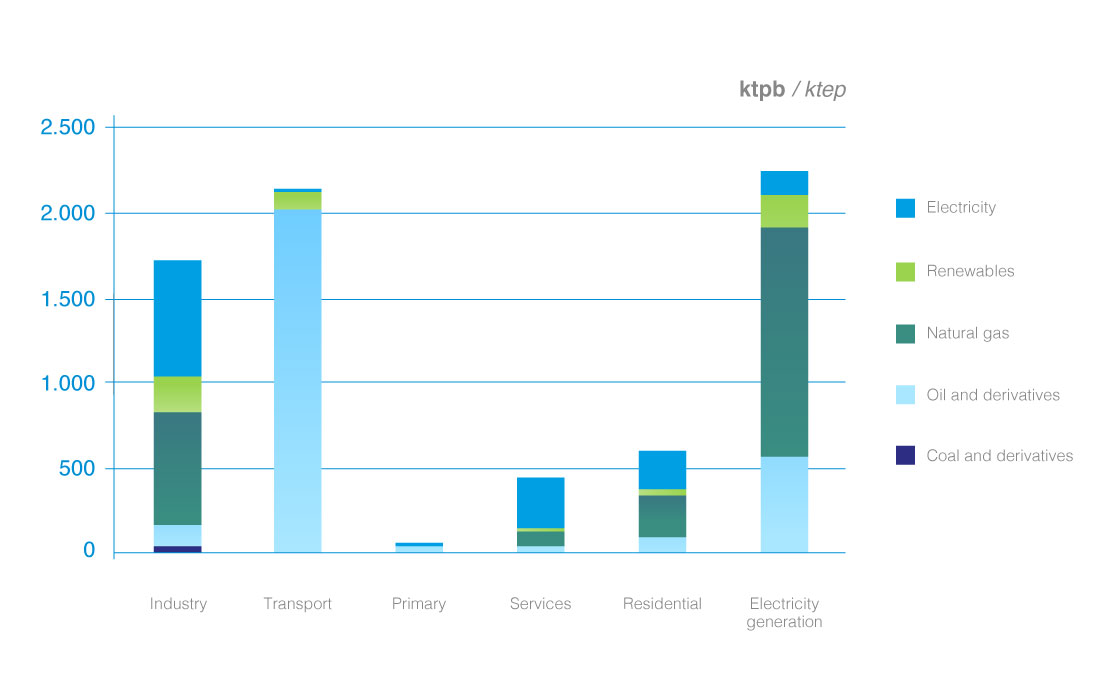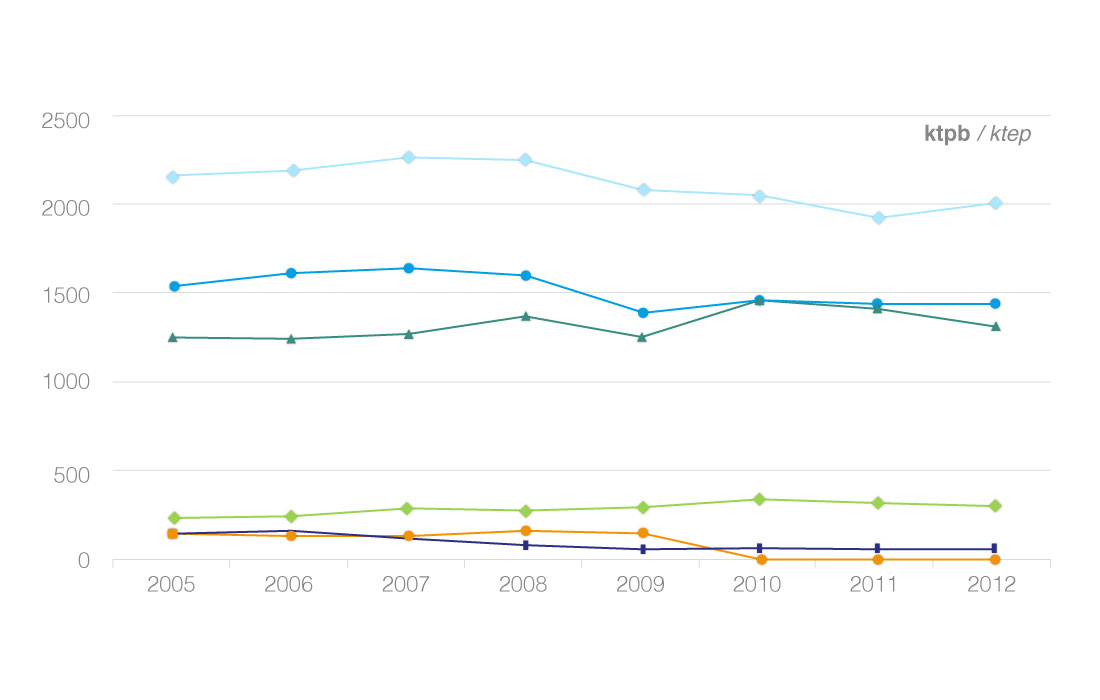Analysis of long-term energy forecasts

From 1960 onwards, Basque energy demand grew at important rates, parallel to economic development, up to a level that was maintained with the 1973 and 1978 oil crises. In the following decade, the combination of Basque industrial restructuring, energy efficiency and innovation policies enabled significant growth in Basque economic activity while decreasing energy consumption from past levels. This situation lasted until the late 1990s, when demand grew as a result of significant growth in economic activity and a context of moderate energy prices. Despite this, demand remained at similar levels to the 1970s.
Looking to the future, the studies of medium-long term energy forecasts and trends carried out indicate that, in the Basque Country, greater mobility and the increasingly important use of private road transport and, to a lesser extent, the gradual increase of service and comfort levels in the tertiary sector, will be the sectors most directly responsible for the increase in final consumption in coming years. Moreover, energy demand will be affected by higher electric self-generation to replace importation. Analyses performed indicate that, without an institutional energy saving and efficiency policy, the energy needs in the 2000-2020 period increase would more than 60%. Therefore, an energy policy which is maintained in the long term, enabling more rational use, with lower environmental impact, will be essential to implement effective control of energy consumption.
Trend-based scenario of sectoral consumption 2000-2030

TREND DEMAND
The trend-based scenario drawn up so as to suitably analyse potential Basque long-term energy demand trends has a horizon set in the year 2030. The main conclusions, focusing on the year 2020 and reference 2010 included in it, are summarised as follows:
- Basque energy demand will grow 19% in 10 years, taking into account the effects of the current crisis, which is an average annual rate of 1.8%.
- Basque electricity demand, with average annual growth of 1.6%, will increase by 17%. It is assumed that the electrical supply mix will be composed of 51% from power stations, 17% from cogeneration and renewable sources, and the remaining 32% will be imported.
- Natural gas requirements will increase by 30% during the period, with growth in all sectors, largely due to the recovery in consumption, replacements and other sectoral growth.
- The use of renewable resources will increase by about 100,000 toe (tonnes of oil equivalent), which means growth of 18% in 10 years. This means that the share of renewable sources in final consumption might reach a quota of 9%.
- Final consumption in all sectors will increase 13% compared to 2010. The sectors that will experience the increase after the economic recovery are industry and transport.
Trend-based scenario of sectoral consumption 2000-2030

The economic structure of the Basque Country has also evolved parallel to its economic growth. In 2008 the service sector generated two-thirds of GDP (62%), while the weight of industry dropped to 28% and transportation rose to 5%. The construction sector also showed an increase, reaching 9% of GDP, as a response to the real estate boom that started at the beginning of the decade while, on the other hand, the decline of the economic contribution of the primary sector stands out, coming to represent only 1%.
Gross internal consumption and final energy consumption


Industry is the highest energy consuming sector in the Basque Country, with a share of around 45% of final consumption, in stark contrast to what happens in other regions and countries. In addition, the Basque industrial sector is characterised by the existence of a set of energy intensive industrial subsectors, like in the case of the steel, foundry, cement, paper, glass and chemical industries, which account for around 72% of industrial energy consumption. The process of gasification in the sector is noteworthy, as natural gas currently accounts for approximately 40% of industrial consumption and only 7% of diesel oil, petroleum coke and fuel oil remains.


Final consumption by energy types




